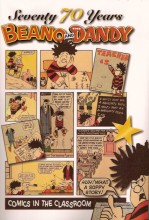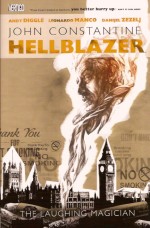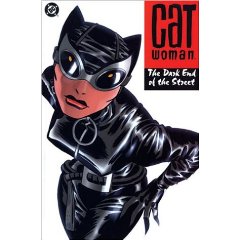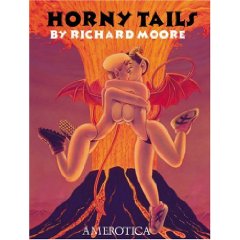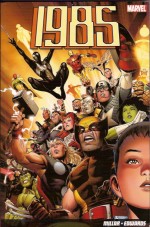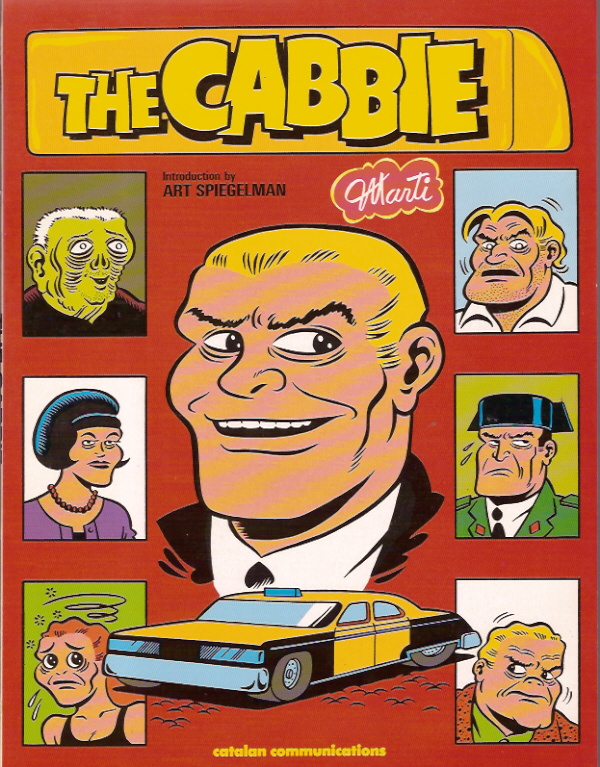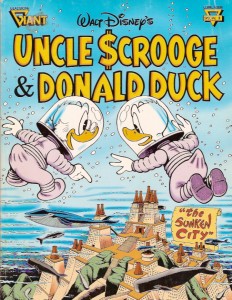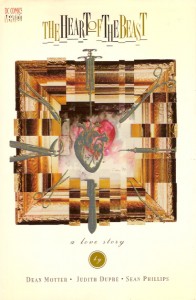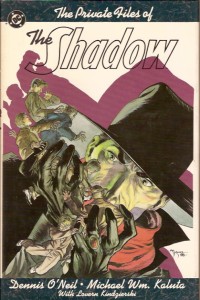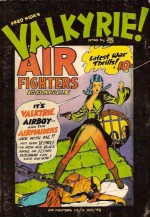
By Fred Kida & various (Ken Pierce)
No ISBN
Airboy was one of the very best adventure strips of the Golden Age; one with a terrific pedigree and a profound legacy. Created for Hillman Periodicals by the brilliant Charles Biro (Steel Sterling, Crimebuster, the original Daredevil, the Little Wiseguys and the landmark genre prototype Crime Does Not Pay number among his many triumphs) it featured a plucky teen and his fabulous super-airplane, affectionately dubbed ‘Birdie’.
In his more than twelve years of publication the boy-hero tackled the Axis powers, crooks, aliens, monsters, demons and every possible permutation of sinister threat – even subversive giant rats and ants!. The gripping scripts, initially the work of Dick Wood, took the avenging aviator all over the world and pitted him against some of the most striking adversaries in comics.
The most notable of these was undoubtedly the conflicted Nazi Air Ace known as Valkyrie, who flew the killer skies with a squadron of lethal lovelies codenamed The Airmaidens.
Their first duel happened in Air Fighters Comics volume 2, #2 (November 1943), a full year after the hero’s debut, and featured art by up-and coming Fred Kida, twenty-three years old, utterly besotted with the work of Milton Caniff, and ably inked by Bill Quackenbush.
‘Airboy Meets Valkyrie’ found the lad based at an RAF base when a daring raid by the Airmaidens occurs. Following the planes home Airboy is captured and tortured but his stoic bravery inspires the warrior-women to defect…
This simple but evocative tale was followed in by a sequel in Air Fighters Comics volume 2, #7 (April, 1944). ‘The Death Lights’ with Kida in full artistic control, deals with a new Nazi beam weapon that Airboy fails to destroy. Captured once more he is rescued by the Airmaidens, now a crack allied fighter squadron.
They didn’t meet again until 1946 by when Air Fighters had changed its name to Airboy Comics. From volume 2, #12. ‘The Return of Misery’ features the ghostly spirit who claims the souls of downed airmen, imprisoning them in his eerie flying dungeon “the Airtombâ€. Entranced by the monster Val is rescued by the valiant lad, but in the end no flyer ever escapes Misery…
‘An American Legend’ from Airboy Comics volume 3, #6 (July 1946) sees Kida growing fully into his own lush yet chiaroscuric style (this book is printed in black and white, which makes the art even bolder than the often muddy-coloured original comics). In this tale Airboy finds an old war buddy and Val has been brainwashed into committing crimes, leading him to end the villain responsible with typical military efficiency.
This slim tome concludes with the last Valkyrie tale of the period: a lacklustre script that was more concerned with the rise of “the Reds†than character or plot. It is notable however as an early experiment in crossover continuity. ‘The Wind of Battle’ (Airboy Comics volume 3, #12: January 1947) pitted Airboy and his occasional ally in battle against the “Asiatic†tyrant Black Tamerlane.
The story ended with the pair in the villain’s hypnotic clutches and the back-up star Skywolf (a feature of the comic since the Air Fighter days) was seconded to wrap up the saga in his own strip – a riotous action romp that dotted all the “i’s†and dotted all the “t’sâ€.
Airboy folded with volume 10, #4 (May 1953) and wasn’t seen in new material until Eclipse Comics revived the character and cast in 1986, and this little gem from that crusading guardian of Popular Culture Ken Pierce may well have been instrumental in that splendid return.
Although still readily available through online vendors and comic shops, the reproduction in this book is poor in places even if the quality and excitement shines through. It’s well overdue for a revamped re-release now that it can benefit from all the advances of modern print technology. I eagerly await such a volume especially if room can be found for all Kida’s efforts and not just the most sinister and sexy ones…
© 1982 Ken Pierce Inc. Subsequent © whoever owns the trademark now.

